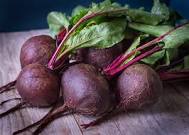What are the health benefits of red foods? Five Red Foods that Make Your Taste Buds Dance
Red Peppers

Ideal Protein Phase
ALL PHASES
Higher Rated Micronutrients
- Vitamin C
- Vitamin A
- Vitamin B6
- Vitamin E
- Various Carotenoids
- Various Antioxidants
Red bell peppers are the ripest of the bell peppers (indicated by their robust color), and this means that they contain the most micronutrients out of all bell pepper colors. We tend to know the benefits of Vitamin C for supporting your immune system and Vitamin A (which boosts vision health and strong communication between cells). Vitamin B6 and B9 (known as Folate) have a pretty big impact on your metabolism and ability to convert carbs into energy.
Then, there’s the Antioxidants and Carotenoids:
Quercetin is found in significant amounts in bell peppers and is responsible for: 1) fighting free radicals in your body, 2) reducing chronic inflammation, 3) preventing neurological diseases, infections, and some allergies, and even 4) reducing the risk of heart disease and some cancers.[1]
Capsaicinoids are also prominent in bell peppers. These goodies actually, “have been found to accentuate the impact of caloric restriction on body weight loss.”[2] In other words, it can boost the benefits of having a lower-calorie diet when trying to lose weight! They are, however, a member of the Nightshade family, so if you have a sensitivity to that category of food, it’s best to avoid them (as well as paprika and red pepper flakes). But if not, chop them into a bowl of salsa, roast them, or simply eat them raw with some salt and pepper!
[1] https://www.medicalnewstoday.com/articles/bell-peppers#for-arthritis
[2] https://www.nature.com/articles/ijo2015253
Beets

Ideal Protein Phase
PHASES:
- STABILIZATION
- MAINTENANCE
Higher Rated Micronutrients
- Vitamin B9 (Folate)
- Manganese
- Copper
- Iron
- Various Carotenoids
- Various Antioxidants
Granted, beets do contain more carbs than desired for Phase 1 veggies, but you can have a whole cup every day when you reach Phase 2! Just like bell peppers, beets contain folate, but in significantly higher amounts. In fact, 3.5oz of boiled beets contain 20% of your body’s daily folate needs.[1] Folate is responsible for red blood cell formation and for healthy cell growth/function. This is why folate, in the form of folic acid, is given to women trying to get pregnant or who are already expecting.
Furthermore, “…several studies suggest that increasing your intake of folate could significantly lower blood pressure levels…” because of their higher levels of nitrates and folate.[2] Beets are also high in manganese, a mineral that helps the body in many ways like forming connective tissue and building bones and improving blood clotting functionality. “It also plays a role in fat and carbohydrate metabolism, calcium absorption, and blood sugar regulation,”[3] all of which is music to our ears! Roasted beets with olive oil and salt/pepper are delicious on their own or as part of a salad topping– especially with some walnuts and goat cheese. Delicious.
[1] https://www.healthline.com/nutrition/benefits-of-beets#TOC_TITLE_HDR_2
[2] https://pubmed.ncbi.nlm.nih.gov/34478339/
[3] https://www.mountsinai.org/health-library/supplement/manganese
Strawberries

IP Phase
- STABILIZATION
- MAINTENANCE
Higher Rated Micronutrients
- Vitamin C
- Vitamin B complex
- B6
- Niacin,
- Riboflavin
- Pantothenic acid
- Folic acid
- Manganese
Manganese makes another high-level appearance within strawberries, bringing its metabolizing and sugar regulating benefits to these sweet delights. Vitamin C is also abundant in strawberries. In fact, in 100g (about 3oz) of fresh strawberries, there is approximately 98% of the recommended daily value intake (DVI) percentage of Vitamin C. What a tasty way to help support your immune system!
The B-complex vitamins also play a sizable role in strawberries’ perks. These vitamins help the body to metabolize the macronutrients (protein, fat, carbs) that you are consuming day to day. So, eating them fresh– maybe as part of your Phase 2 or Maintenance smoothie– can be a great way to start the day! Just keep in mind that when they have been cooked (turned into jam or a sauce), not only has there likely been sugar added, but the amounts of water-soluble Vitamin C and B-complex are significantly reduced. Eating them fresh or frozen give you the greatest micronutrient values!
Raspberries

IP Phase
- STABILIZATION
- MAINTENANCE
Higher Rated Micronutrients
- Vitamin C
- Manganese
- Fiber
- Vitamin K
- Tannins
Although these berries don’t have as much vitamin C and manganese as strawberries, both micronutrients are measured in high numbers in raspberries. However, what IS high in raspberries is Fiber! In one cup of fresh or frozen raspberries is packed 20-30% of the recommended DVI of fiber. That’s quite a lot of fiber for such a little bit of fruit. This insoluble fiber helps your digestive system move more smoothly and with greater regularity.
Vitamin K is also fairly high in raspberries, at roughly 12% of DVI within 1 cup. Vitamin K helps your body to produce the proteins needed for improving your blood clotting factors and your body’s bone-building success. That means that if you have issues with osteoporosis, eating raspberries can help increase your bone density. Lastly, because raspberries are low in carbs (like most berries), they are a great choice if you want something a little sweet without raising your blood sugar. This means that diabetics can eat them more easily than other more sugary fruits. Cooler still: “raspberries are high in tannins, which block alpha-amylase, a digestive enzyme necessary for breaking down starch. By blocking alpha-amylase, raspberries may reduce the number of carbs absorbed after a meal.”[1] Doing what I can to minimize carb intake is a-ok with me!
[1] https://www.healthline.com/nutrition/raspberry-nutrition#blood-sugar
Tomatoes

Ideal Protein Phase
ALL PHASES
Higher Rated Micronutrients
- Vitamin C
- Folate
- Potassium
- Lycopene
- Vitamin K
- Fiber
Another member of the Nighshade family, tomatoes are loaded with micronutrients even though they are actually about 95% water! However, the other 5% is predominantly carbs, which is why they are limited to four cups per week during Phase 1. They also have a good amount of insoluble fiber (though not as much as raspberries), so they can assist your digestive system too. Tomatoes also have good amounts of Vitamin C, Folate, Potassium, and Vitamin K.
However, where tomatoes shine is in their amounts of the Lycopene. Lycopene is an antioxidant that not only gives tomatoes their red color, but it also has several health benefits, “ranging from heart health to protection against sunburns and certain types of cancers.” This phytonutrient definitely works to defend your body in more ways than one!
Because the highest amount of lycopene is contained in the skin of tomatoes, eating them raw with a little salt and pepper and maybe some olive oil is a delicious way to reap the greatest amount of nutritional value. However, if you want to puree those puppies, you can also make a spicy salsa or gazpacho!
[1] https://www.healthline.com/nutrition/lycopene




